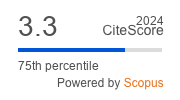Article | Open Access
Field Study: How Are Vulnerable Children in China Developing Through Sport‐Based Social Projects?
| Views: | 2773 | | | Downloads: | 3591 |
Abstract: According to a UNICEF report, there are 65.17 million children living in poverty‐stricken areas of China, accounting for 21.9% of the national child population. Authorities focus on economic aid and basic safety protection for vulnerable children but lack support in psychological, emotional, and social areas. While international scholars have recognized sports‐based social projects (SBSPs) as an effective tool for promoting child development, there is limited research on the role of SBSPs in advancing vulnerable children’s development in China. To provide empirical data on the outcomes of SBSPs in China and discuss their mechanisms and conditions, the author conducted a field study of a project called “Angel” in the suburbs of Beijing. Through 101 hours of observation and 17 hours of in‐depth interviews, the thematic analysis revealed five core themes: initial backgrounds, developmental challenges, collective life, sport activities, and growth. The study found that these children, with backgrounds of poor education, isolation, and poverty, exhibited Developmental Challenges such as weak social skills, cognitive limitations, and low psychological capital. However, through collective life, social interactions, educational management, independent living experiences, and sports opportunities, they showed improvements in responsibility, social skills, and optimism. The study also explored the fulfillment of basic psychological needs in sports and collective life, offering theoretical support for the role of SBSPs in promoting child development.
Keywords: basic psychological needs; child development; sport‐based social projects; thematic analysis; vulnerable children
Published:
Issue:
Vol 13 (2025): Impact Evaluation of Community Sport Programmes and “Sport Social Work Practices”
© Zichen Zhuang, Xi Yang, Xiaolong Chen, Hongjiang Wang. This is an open access article distributed under the terms of the Creative Commons Attribution 4.0 license (http://creativecommons.org/licenses/by/4.0), which permits any use, distribution, and reproduction of the work without further permission provided the original author(s) and source are credited.


